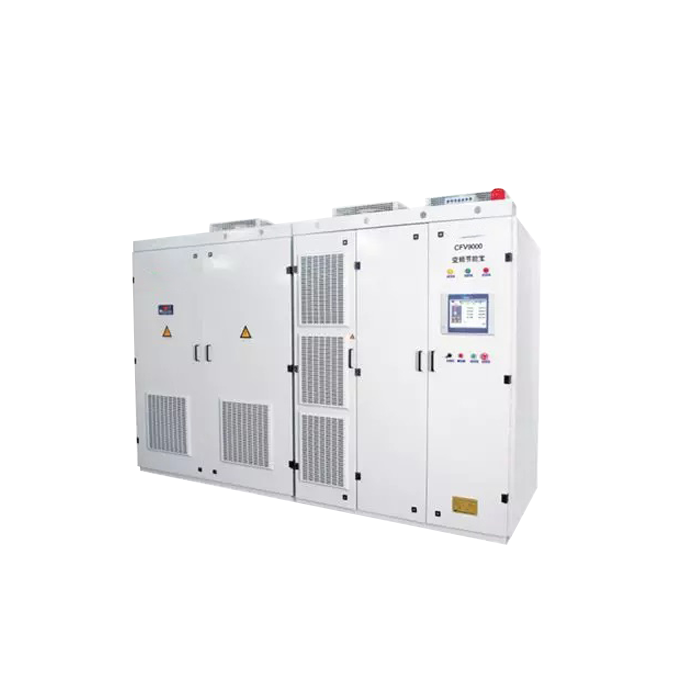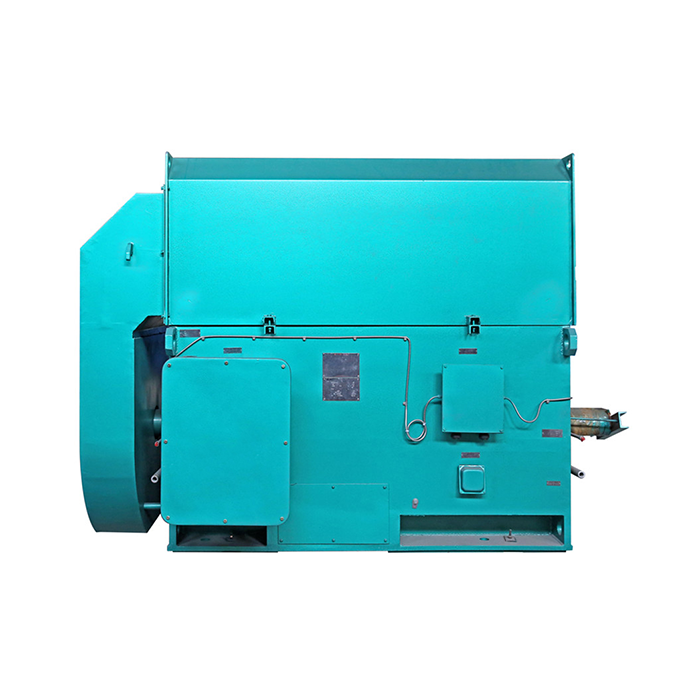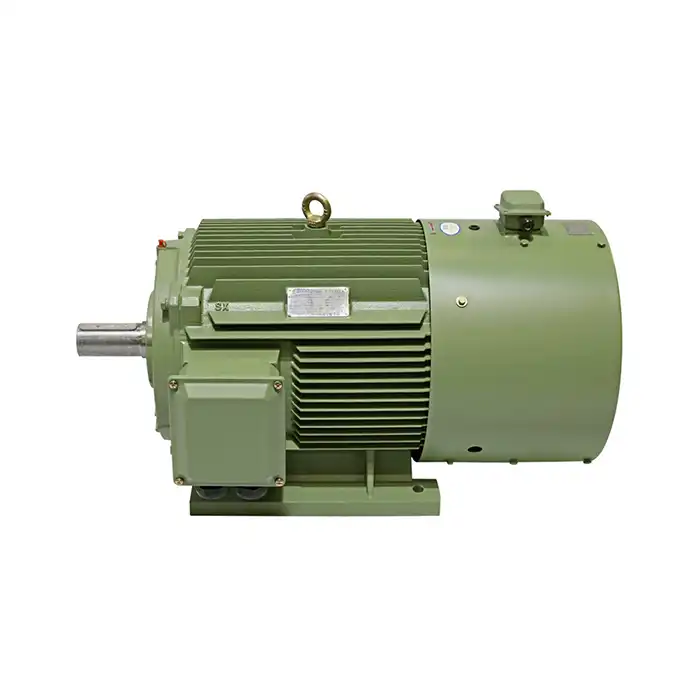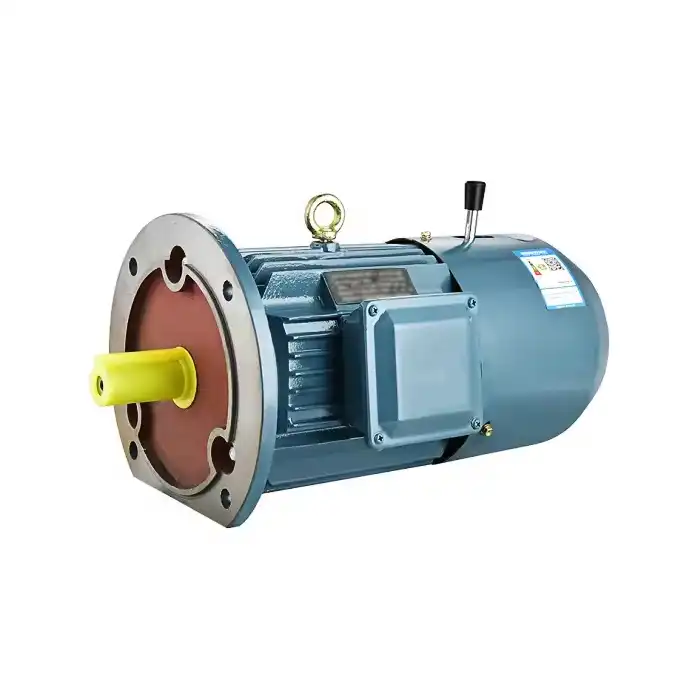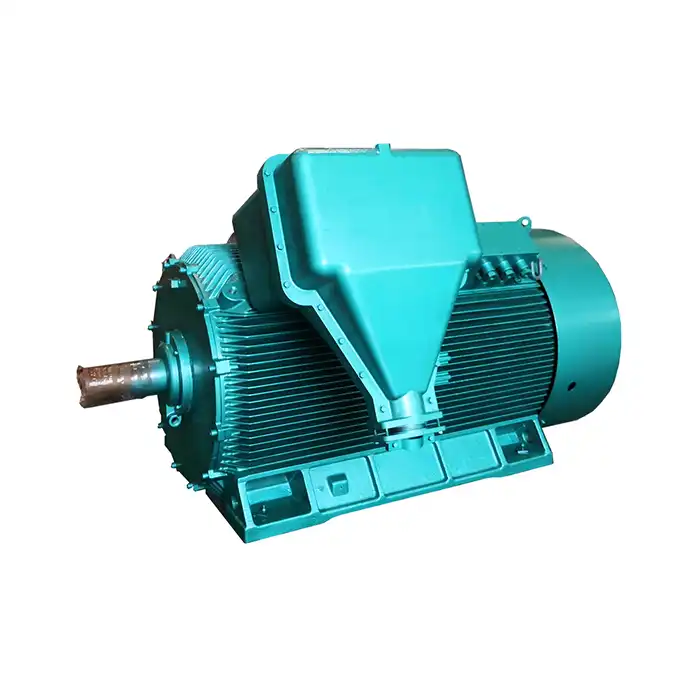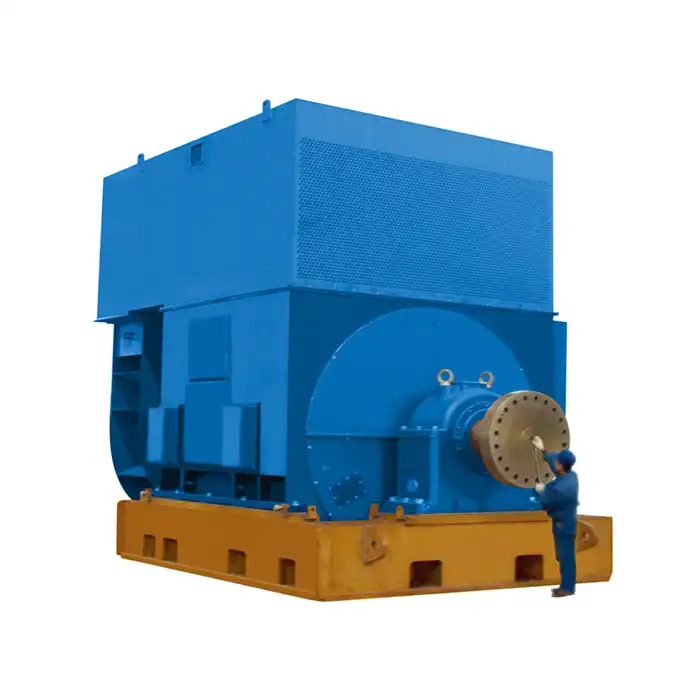How to Upgrade from a 500 kW to a 630 kW Motor?
Upgrading from a 500 kW to a 630 kW motor can significantly boost your industrial operations' power and efficiency. This comprehensive guide will walk you through the essential considerations, benefits, and steps involved in this substantial upgrade. Whether you're in manufacturing, energy production, or heavy machinery operations, this information will help you make an informed decision and execute the upgrade smoothly.
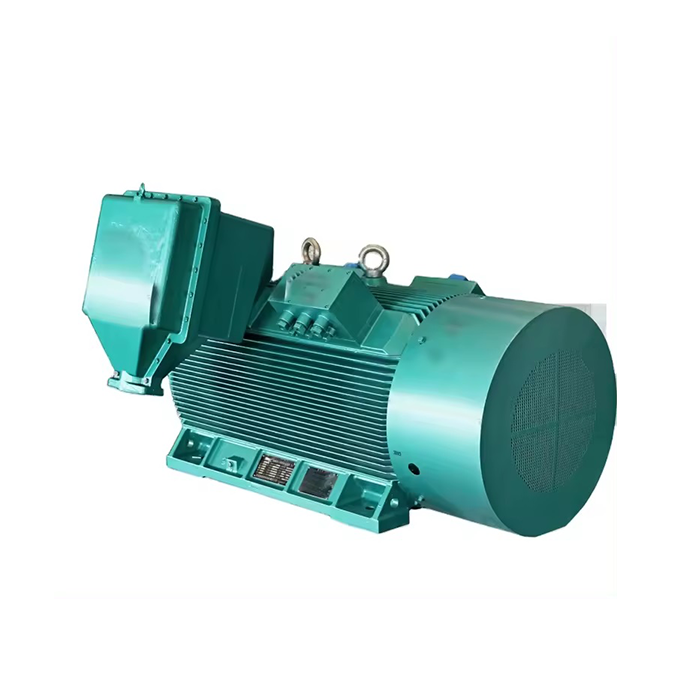
Series:YVF2
Protection level:IP54
Voltage range:3000V±5%,3300V±5%,6000V±5%,6600V±5%,10000V±5%,11000V±5%
Power range:160-1600 kW
Application:fans, water pumps, compressors, crushers, cutting machine tools, transportation machinery, etc.
Advantage:compact structure, light weight, low noise, small vibration, long service life, easy installation and maintenance.
Standard: This series of products complies with JB/T10444-2004 standards.
Others: SKF, NSK, FAG bearings can be replaced according to customer requirements.
Assessing Infrastructure for 630 kW Motor Upgrade
Before diving into the upgrade process, it's crucial to evaluate your current infrastructure to ensure it can support a more powerful motor.
Electrical System Capacity
The first step in assessing your infrastructure is to examine your electrical system's capacity. A 630 kW motor will draw more current than your existing 500 kW unit, so you need to ensure your electrical supply and distribution system can handle the increased load.
Physical Space Requirements
While a 630 kW motor may not be significantly larger than a 500 kW motor, it's essential to verify that your existing installation space can accommodate any size differences. Measure the available space and compare it with the dimensions of the new motor.
Cooling and Ventilation
Higher power output often means increased heat generation. Evaluate your current cooling and ventilation systems to determine if they can adequately manage the heat produced by a 630 kW motor.
Foundation and Mounting
The increased power of a 630 kW motor may result in higher vibrations and stress on the mounting structure. Assess your current foundation and mounting setup to ensure they can support the new motor's weight and operational forces.
Cost-Benefit Analysis: 500 kW vs 630 kW
Understanding the financial implications of upgrading to a 630 kW motor is crucial for making an informed decision.
Initial Investment
Upgrading from a 500 kW motor to a 630 kW motor requires careful consideration of the initial financial outlay. Beyond the higher purchase price of the motor itself, additional costs may arise from necessary modifications to your electrical system, such as upgraded switchgear or cabling. Cooling systems might also need enhancement to handle the increased heat generated by the larger motor, and mounting structures or foundations may require reinforcement to support the added weight. Factoring in all these elements ensures a realistic assessment of the total investment, preventing unexpected expenses and providing a clear picture of the upfront financial commitment.
Energy Efficiency Gains
Modern 630 kW motors typically offer improved energy efficiency compared to older 500 kW units. This efficiency translates to reduced electricity consumption over time, which can significantly lower operational costs, especially in facilities with continuous or heavy-duty usage. To quantify these savings, it is essential to consider your average operational hours, the load profile of the motor, and prevailing electricity rates. Higher efficiency motors may also generate less heat, reducing cooling requirements and associated energy costs. Overall, evaluating potential energy savings helps determine whether the efficiency benefits of the larger motor justify the additional initial investment.
Productivity Increase
A 630 kW motor can deliver more power, potentially increasing production capacity and throughput. In practical terms, this could mean faster cycle times, the ability to operate additional equipment simultaneously, or the capability to handle heavier loads without performance degradation. Assessing the potential productivity gains requires analyzing your current bottlenecks, operational schedules, and production targets. Quantifying the increase in output allows for a clearer understanding of how the upgraded motor could impact revenue. This step is essential for determining whether the enhanced performance translates into meaningful operational advantages and contributes positively to overall profitability.
Maintenance Costs
While a new 630 kW motor may initially require less maintenance than an older 500 kW unit, long-term considerations are crucial. Maintenance costs include routine inspections, lubrication, potential repairs, and spare part availability. Larger motors may involve more expensive replacement components, or specialized servicing requirements that could influence overall operating costs. Evaluating maintenance history, manufacturer recommendations, and expected lifecycle helps anticipate these expenses. Balancing the reduced downtime and increased reliability of a new motor against potential long-term maintenance expenditures ensures a realistic cost assessment and prevents unexpected financial burdens during the motor’s operational life.
Return on Investment (ROI) Calculation
Calculating the ROI for upgrading to a 630 kW motor involves integrating all key factors: initial investment, energy efficiency gains, productivity increase, and maintenance costs. Begin by estimating total savings and additional revenue generated over a defined period, then compare this to the upfront cost of the motor and associated infrastructure upgrades. A positive ROI indicates that the motor upgrade is financially viable, and calculating the payback period reveals how long it will take to recoup the investment. This holistic analysis provides a clear, data-driven basis for deciding whether moving from a 500 kW to a 630 kW motor aligns with your operational and financial objectives.
Step-by-Step Guide to Motor Replacement Process
Once you've decided to proceed with the upgrade, follow these steps to ensure a smooth transition from your 500 kW to 630 kW motor.
Planning and Preparation
Proper planning is crucial for a successful motor upgrade. Create a detailed project plan, including timelines, resource allocation, and contingency measures.
Selecting the Right 630 kW Motor
Choose a 630 kW motor that best fits your application requirements. Consider factors such as speed, torque, starting method, and environmental conditions.
Upgrading Electrical Infrastructure
Implement any necessary upgrades to your electrical system to support the increased power requirements of the new motor. This may include updating switchgear, cables, and protection devices.
Modifying Mechanical Infrastructure
Make any required modifications to the motor foundation, mounting system, and coupling to accommodate the new 630 kW motor.
Removing the Old Motor
Carefully disconnect and remove the existing 500 kW motor, ensuring proper safety procedures are followed throughout the process.
Installing the New 630 kW Motor
Install the new 630 kW motor, paying close attention to alignment and proper connection of all electrical and mechanical components.
Testing and Commissioning
Conduct thorough testing of the new motor installation, including no-load and load tests, to ensure proper operation and performance.
Training and Documentation
Provide training to operators and maintenance staff on the new motor's characteristics and maintenance requirements. Update all relevant documentation to reflect the upgrade.
Post-Installation Monitoring
Implement a monitoring plan to track the performance of your new 630 kW motor and identify any potential issues early on.
Conclusion
Upgrading from a 500 kW to a 630 kW motor is a significant undertaking that requires careful planning and execution. By thoroughly assessing your infrastructure, conducting a comprehensive cost-benefit analysis, and following a structured replacement process, you can successfully implement this power upgrade and reap the benefits of increased capacity and efficiency in your industrial operations.
Are you considering upgrading your industrial motor to a more powerful 630 kW motor? Shaanxi Qihe Xicheng Electromechanical Equipment Co., Ltd. specializes in providing high-efficiency, low-energy consumption power equipment solutions for a wide range of industries, including manufacturing, process control, HVAC, energy production, and more. Our team of experts can guide you through the entire upgrade process, from initial assessment to final installation and commissioning. Whether you're in industrial automation, energy and utilities, or other specialized sectors, we have the expertise to meet your specific needs. Don't let outdated equipment hold back your operations. Contact us today at xcmotors@163.com to learn how we can help you power up your business with our advanced motor solutions.
References
1. Johnson, R. (2022). Industrial Motor Upgrades: A Comprehensive Guide to Increasing Power and Efficiency.
2. Smith, A. & Brown, T. (2021). Cost-Benefit Analysis of High-Power Motor Upgrades in Manufacturing Environments.
3. Technical Standards Committee. (2023). Best Practices for Installing and Commissioning Large Industrial Motors.
4. Energy Efficiency Council. (2022). Energy Savings Through Industrial Motor Upgrades: Case Studies and Analysis.
5. Thompson, E. (2023). Electrical Infrastructure Considerations for High-Power Motor Installations.
6. Miller, J. & Davis, K. (2021). Performance Monitoring and Optimization Strategies for Industrial Motor Systems.




